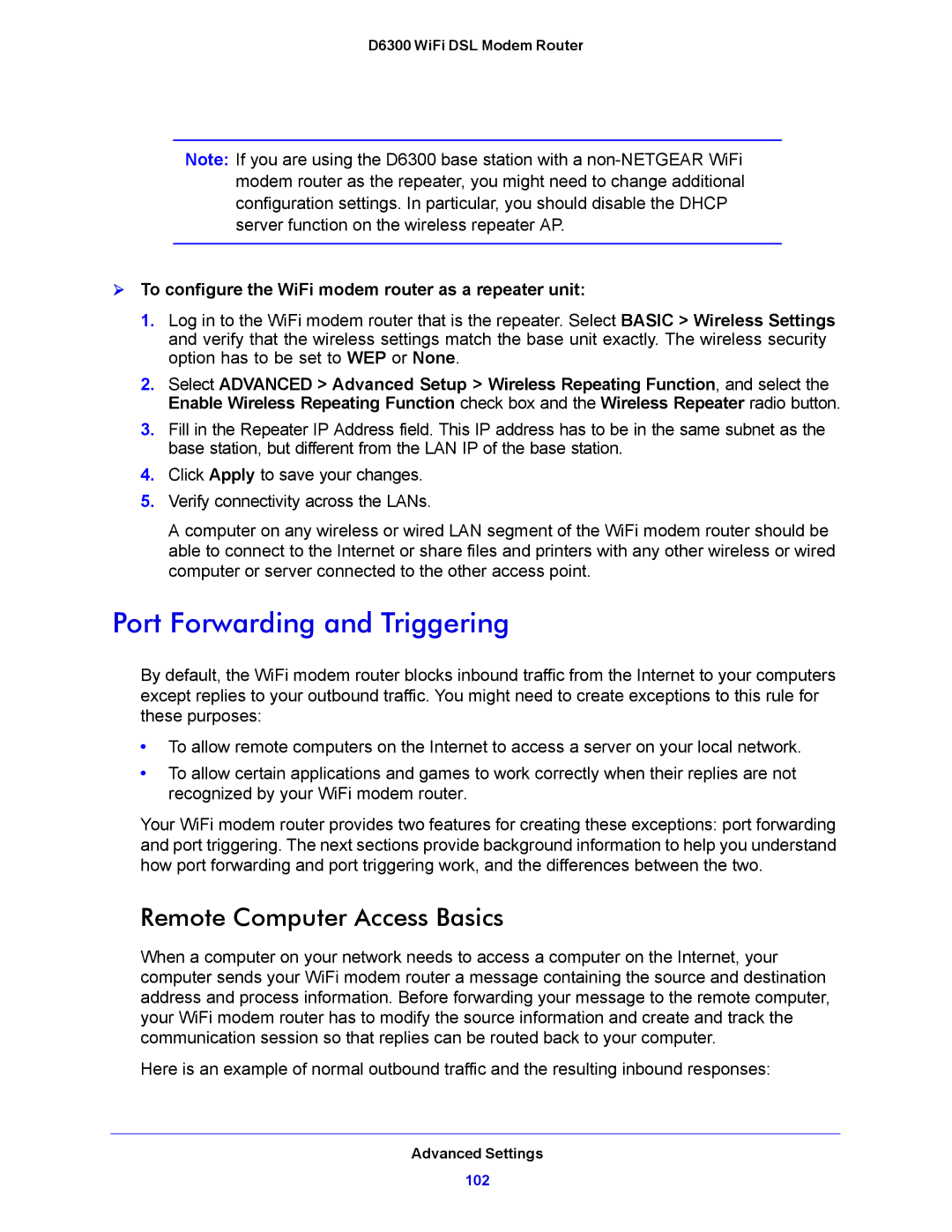
D6300 WiFi DSL Modem Router
Note: If you are using the D6300 base station with a
To configure the WiFi modem router as a repeater unit:
1.Log in to the WiFi modem router that is the repeater. Select BASIC > Wireless Settings and verify that the wireless settings match the base unit exactly. The wireless security option has to be set to WEP or None.
2.Select ADVANCED > Advanced Setup > Wireless Repeating Function, and select the Enable Wireless Repeating Function check box and the Wireless Repeater radio button.
3.Fill in the Repeater IP Address field. This IP address has to be in the same subnet as the base station, but different from the LAN IP of the base station.
4.Click Apply to save your changes.
5.Verify connectivity across the LANs.
A computer on any wireless or wired LAN segment of the WiFi modem router should be able to connect to the Internet or share files and printers with any other wireless or wired computer or server connected to the other access point.
Port Forwarding and Triggering
By default, the WiFi modem router blocks inbound traffic from the Internet to your computers except replies to your outbound traffic. You might need to create exceptions to this rule for these purposes:
•To allow remote computers on the Internet to access a server on your local network.
•To allow certain applications and games to work correctly when their replies are not recognized by your WiFi modem router.
Your WiFi modem router provides two features for creating these exceptions: port forwarding and port triggering. The next sections provide background information to help you understand how port forwarding and port triggering work, and the differences between the two.
Remote Computer Access Basics
When a computer on your network needs to access a computer on the Internet, your computer sends your WiFi modem router a message containing the source and destination address and process information. Before forwarding your message to the remote computer, your WiFi modem router has to modify the source information and create and track the communication session so that replies can be routed back to your computer.
Here is an example of normal outbound traffic and the resulting inbound responses:
Advanced Settings
102
